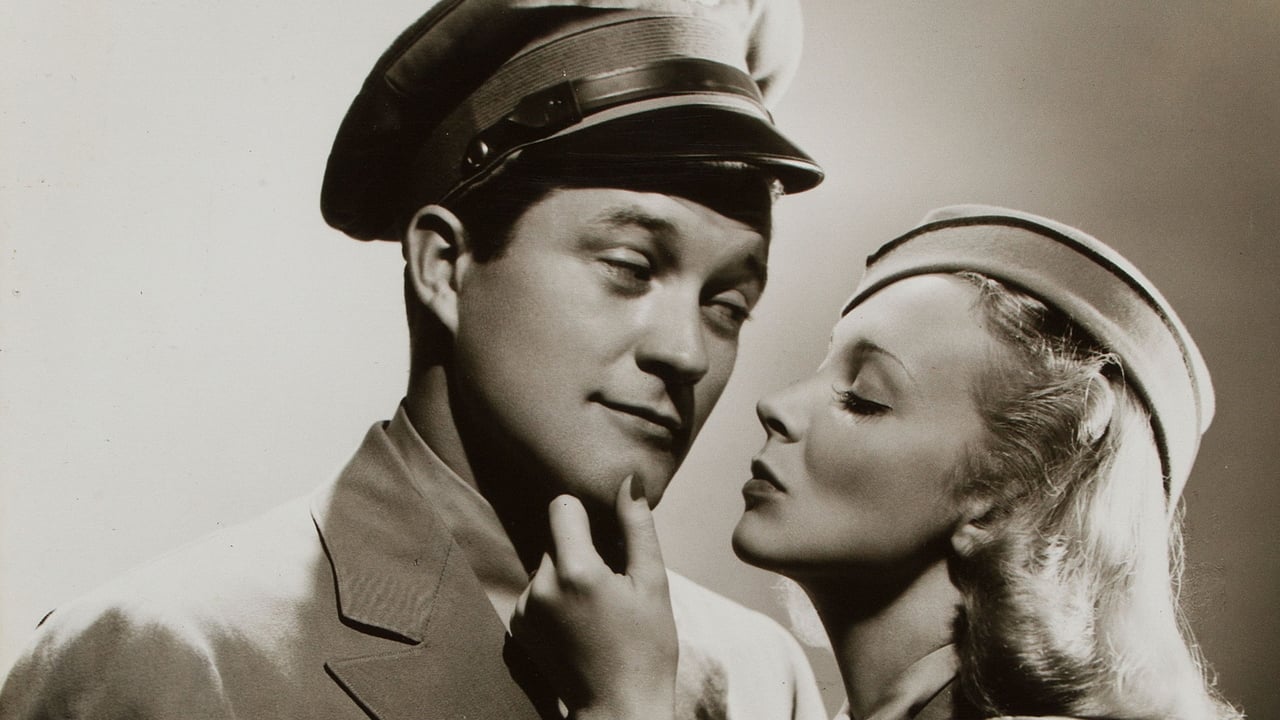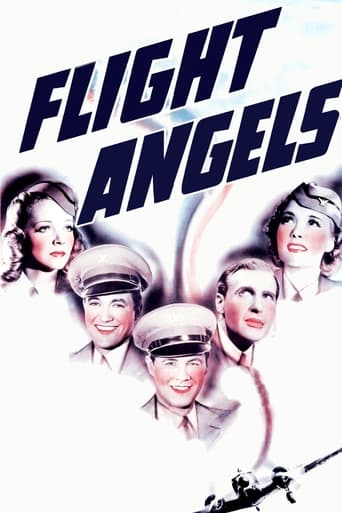



In truth, there is barely enough story here to make a film.
View MoreThis is one of the few movies I've ever seen where the whole audience broke into spontaneous, loud applause a third of the way in.
View MoreExcellent characters with emotional depth. My wife, daughter and granddaughter all enjoyed it...and me, too! Very good movie! You won't be disappointed.
View MoreOne of the film's great tricks is that, for a time, you think it will go down a rabbit hole of unrealistic glorification.
View MoreDirected by Lewis Seiler, with a story co-written by Jerry Wald, this insipid romantic comedy-drama is one of the weaker B films I've seen which, given its cast, is surprising.Featuring a dated storyline and a plethora of uncomfortably sexist themes, the plot is rife with stereotypes from the time in our history prior to U.S. involvement in World War II, when women presumably had nothing to look forward to besides finding a man that would marry them.The story is about a couple of womanizing pilots (Dennis Morgan and Wayne Morris) who, despite the fact that they have "women in every port", have two devoted stewardess girlfriends (Virginia Bruce and Jane Wyman, respectively). The pilots are also working on the latest high altitude, 30% faster airplane for their boss Ralph Bellamy who, like a lot of the other roles he's played, is the third man out in a love triangle (with Morgan and Bruce). The drama concerns Morgan's character getting eye trouble, diagnosed by a doctor (John Litel), which jeopardizes his future as a pilot.Though I've already given the salient plot points, and because I found them so offensive, I thought I'd detail some of the more objectionable stereotypes one finds in this movie:Chick (ha ha) Farber (Morgan) is seen kissing one gal while trying to board the plane he's to fly with Artie Dixon (Morris) and stewardess Mary Norvell (Bruce). When he successfully frees himself from her, he's met by another which he'd apparently been with 2 hours before that, and all this is witnessed by his girlfriend Mary.On the flight, Mary is seen to be too ditsy to remember which passenger needed a bicarbonate of soda while she refuses to introduce the pilots to the "fresh meat", a stewardess trainee also on the flight. A laughing Dick Elliot plays one of the passengers. Some drama and repetitive dialogue ("I never had that pulled on me before") is introduced by having a woman give birth on the airplane. Bill Graves (Bellamy) at first doesn't believe what his flight crew has told him, but eventually he gets Dr. Barclay (Litel) to meet the plane when it lands.Once on the ground, the stewardesses are shown to be women that are just bidding their time until a pilot or a rich passenger ask for their hand in marriage. Bellamy's character is shown to be interested in Bruce's, who naturally prefers Morgan's, despite the fact of his philandering. We're then introduced to Nan Hudson (Wyman), who's likewise "hooked" on Morris's character.Though Wyman's character has some sassy dialogue, she's wasted in this film and her character is likewise inflicted with "helpless without a wedding ring" syndrome. Morgan and Morris aren't just pilots, they're engineers and mechanics who designed, and are building, the next great airplane for Bellamy.Meanwhile, the silly females have "cat fights" over the men. One of Ms. Bruce's rivals is played by Margot Stevenson; another of the stewardesses (Dorothea Kent) has a cartoon character voice. Ironically, Grace Stafford, who went on to voice animated Woody Woodpecker, is also in the cast.When Morgan's character is diagnosed with a degenerative eye condition, he's grounded by Litel's and Bellamy's characters, and is offered a position training the stewardesses. Naturally, these women are so overcome by his good looks that they can't concentrate on their studies and he's too frustrated with the position to keep doing it. He's also quick to discard his new bride Bruce.Shown to be lacking the kind of judgment required by real pilots, the former barnstormer Morgan "steals" their new plane, taking it up for its test flight, after he'd learned that another (John Ridgely) was hired to replace him. Some really low budget special effects are used but, naturally, everything works out well in the end for all concerned.
View MoreFLIGHT ANGELS is one of the scripts Olivia de Havilland turned down and was put on suspension for refusing to do after her success in GWTW. It's easy to see why. De Havilland was to play the VIRGINIA BRUCE role of the stewardess pursued by DENNIS MORGAN, as bland a role as Bruce ever had. Her career was on the downswing at this time.It's really no more than a competent programmer designed to give exposure to Morgan and JANE WYMAN who were the studio's busiest contract stars and one can easily see that Olivia deserved better material than this. Wyman has her usual role as the heroine's brassy best friend and Morgan simply dispenses his usual Irish charm with WAYNE MORRIS as co-pilot.From the very start, it's a compilation of tired clichés, unbelievably vapid dialogue, sexist depiction of females with nothing on their empty minds but fighting over men, and, in general, runs downhill when we're subjected to a lot of silly shenanigans by Jane Wyman, angry with her boyfriend Wayne Morris.On the serious side, JOHN LITEL gives DENNIS MORGAN an eye exam that shows he shouldn't be flying planes and the rest of the predictable plot deals with Morgan's dilemma. At least the dramatic moments are easier to take than the ill advised attempts at comedy.Summing up: This one was grounded from the start with a worthless script.
View MoreThis film is far better than the usual kind of fluff aviation film made during the late 1930's and into the late 1940's. I expected a light romantic comedy--"not that there is anything wrong with that!"--and was surprised that it is quite interesting on other levels. The plot involved all the predictable vicissitudes of a pilot trying to come to grips with losing his flight qualification due to failing eyesight, and the film does have its share of predictable situations and character foibles. But what is most interesting is how it accurately reflects the state of aviation at the time: the concern over furnishing more reliable and safe all-weather commercial aviation, the challenge and opportunity of developing long-range high-altitude "stratosphere" airplanes, and the behind-the-scenes concern of national security, namely the expectation that we might be eventually involved in the war in China (and of course we were, a year after this film came out, following the Japanese attack on Pearl Harbor). The airplane star of the show is the relatively new Douglas DC-3 (then just 4 years in airline service), a 21 passenger airliner, but there are also very good in-flight visuals of the Lockheed Model 10 Electra, the "stratosphere ship" of the movie. Finally, the acting is better than one might expect--minimal histrionics, some genuine chuckles, and a dialogue that includes some interesting lines. Virginia Bruce is coolly luscious, Denny Morgan and Wayne Morris do a credible job as airmen, and Ralph Bellamy is appropriately "heavy" as their boss. (Incidentally, in the "real world," Morris was inspired by his role in this film to become a Navy pilot, flying Grumman Hellcats in the Pacific and shooting down 7 Japanese planes). A very enjoyable movie, particularly for anyone interested in aviation in the heyday of the propeller-driven airplane!
View MoreThe Flight Angels are the stewardesses of American Airlines, here shown flying hither and yon from their airport base where they spend a lot of time gossiping and applying makeup. Virginia Bruce and Jane Wyman are the Angels we care about, but this being the 1940s, the action involves pilots Dennis Morgan and Wayne Morris, who are involved in the development of a super secret aircraft when they're not busy flying passengers from Point A to Point B. Flight Angels is nicely shot by cinematographer L. William O'Connell and features a vaguely provocative screenplay (one of the stewardesses actually gets away with saying the words 'sex appeal'), but ultimately doesn't rise above its second feature aspirations. Not bad, but predictable.
View More